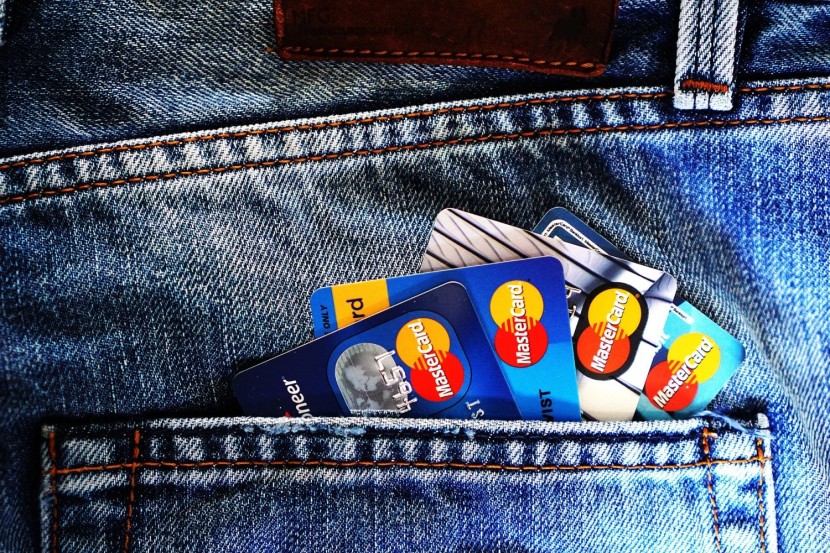
The debit card has come a long way since the first one appeared on the scene more than 50 years ago. Back then, they were basically used as a way to get cash out of your own bank's ATM. Outside of your local area, few merchants could process purchases made with them.
As ATM payment networks and point-of-sale devices were developed, debit cards started gaining in popularity. After all, it's easier to carry a piece of plastic than lug around a wad of cash. And now, as retailers move away from physical currency to keep customers safe, plastic might be the only way you can get that double mocha Frappuccino you need to start your day.
Instead of "Cash or card?" the new question is "Debit or credit?" Debit issuers are responding by adding benefits to their cards that once only came on credit cards, such as cash back on purchases. The result is that debit card spend is growing by 12.3% annually, while credit card spending is down 17%.
Why pay with someone else's money when you can get the same perks from using your own? These five features borrowed from credit cards are convincing consumers to make the switch to debit:
1. Automatic Savings
Cashback incentives are a popular marketing tool employed by credit cards. For every dollar spent, the user gets back a percentage of that dollar as cash, a statement credit, or points toward treats like airline tickets. Credit card companies pay for these rebates through interest charges or annual fees.
Debit cards don't assess interest, and many don't charge the cardholder fees, so it's not a sound business plan for issuers to offer cash back rewards. Instead, they're helping users build their savings through automation. Online debit cards like the one provided by Chime let members "round up" each purchase to the nearest dollar, automatically depositing the rounded amount into a linked savings account.
Cash back is just one system for helping people save money. And because rewards like points encourage spending, savings automation may be the smarter model.
2. High-Tech Protection
Notice that little metal chip on the front of your card? Credit cards started using EMV chips to increase security of transactions between you and a merchant, which meant it was safer to use a credit card than using a debit card.
These days, however, many debit cards have also adopted chip technology. Because chips generate a unique code for each transaction, they're safer than the magnetic stripe that used to be standard.
Just in case someone compromises a chipped debit card, most debit card issuers also offer zero-liability protection against unauthorized usage. Check the features and policies of your card to see if you're covered in case someone uses it without your permission.
3. Fee-Free Overdrafts
If you try to use your credit card to make a purchase that puts you over your spending limit, you may be assessed an over-limit fee. Depending on the card, the fee may be anywhere from 2% of the transaction to a flat $20. The good news is, these fees are quickly going extinct.
Debit card companies have taken notice of credit cards' changing fee structures. Some cards now allow qualified users to exceed their bank balance by a specified amount without paying an overdraft fee.
If your purchase with a debit card sends you a little over the balance in your bank account, you might have the transaction approved anyway. That could save you from a little point-of-sale embarrassment, not to mention an extra charge on your card.
4. No International Transaction Fees
Virtually no credit card issuer charges a fee to pay a U.S.-based merchant with a U.S.-based card. But until recently, most of them assessed high fees for using a credit card outside of the country. The average foreign transaction fee for cards that do charge them is around 2% of the amount spent.
More and more credit card companies are deciding to end foreign transaction fees. The reason is that they discourage card usage at a time when users spend heavily. From hotels to airfare to meals out, an extended international vacation may involve five figures' worth of spending.
Because debit card companies want their share of that spending, they're also cutting back on foreign transaction fees. Beware that some issuers consider ATM withdrawals separately from other transactions, meaning getting cash out of an international ATM may still result in a fee.
5. Contactless Payments
Especially during the coronavirus pandemic, interest in contactless payments has exploded. The pressure to make contactless transactions is coming from all three sides of the market.
Consumers aren't interested in touching any more surfaces than they need to in order to do business. Companies don't want the liability of someone catching the virus at their place of business. Phone companies increasingly see the ability to make contactless payments as a table-stakes feature of a smartphone.
Add those trends up, and it's no wonder no-touch payments have increased for 69% of retailers since January. Although contactless payments were first introduced on credit cards, debit issuers are rapidly adopting the feature.
These days, many debit cards link to popular contactless payment options, such as Apple Pay or Google Pay. Consumers only need to whip out their phone or wave their smartwatch over the merchant's point-of-sale terminal to complete the transaction.
So, which is better: credit or debit? For a long time, credit card perks made using them a lot more appealing than pulling out that dusty debit card. A little cash back went a long way, especially given that debit cards had no similar system for helping their users save money.
It's clear, however, that debit card issuers have been paying attention. They're adding new benefits on top of what might be the biggest perk of all: not paying interest to use some else's money. And if you've ever been in debt, you know just how appealing that bottom-line benefit of debit cards is.








